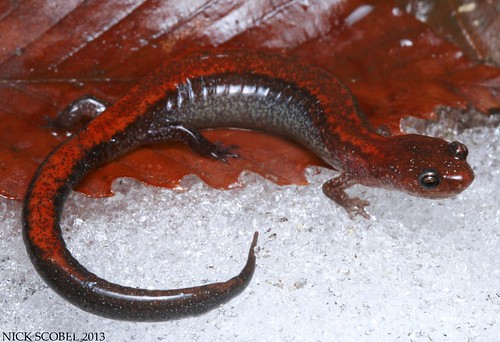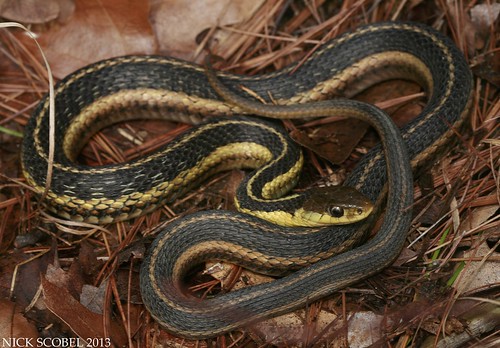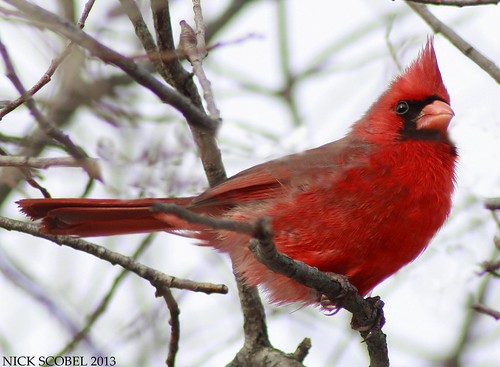Red-backed Salamander - Plethodon cinereus
This species is probably our most common salamander, a denizen of most woodlands where they spend much of their time in the leaf litter or under logs. Redbacks don't typically emerge until late March or early April like our other salamander species. This was a large adult; roughly 4" TL, that had a very nice coloration and was cooperative enough to sit still for a few shots. Not long after, the clouds moved out and the sun was shining and we were hoping some snakes would make an appearance.
Eastern Garter Snake - Thamnophis sirtalis
This large garter snake was one of six seen on this warm January afternoon. I thought most would be seen basking close to their hibernation sites, but almost all of the snakes we saw were on the move through the forest floor. Garter snakes are incredibly efficient at regulating their body temperature. Even when ambient temperatures are in the high 30s, garter snakes can raise their body temp to the high 60s. This makes them quite cold tolerant and explains why they are usually the first snakes seen out in the spring and the last snakes seen out in the fall. The warm day also had the birds active, I was able to snake a couple decent shots of this gorgeous male cardinal.
Northern Cardinal - Cardinalis cardinalis
A female was in the same tree, but I wasn't able to get her into the same shot with the male. We ended up seeing a few more garter snakes and one or two more redback salamanders before calling it a day. Though it was nice to get out in the field in January, the overall concern of how climate change could be affecting wildlife populations is more important. Michigan should have a foot of snow and cold temperatures in the second week of January, not sunny and 60 degrees. I'm hoping that we'll get some heavy snow in the next few months to help combat the lingering effects of last year's drought, especially the vernal pools. That's all for now, until next time try and keep warm! Or cool, depending on how this crazy winter goes the rest of the way.



